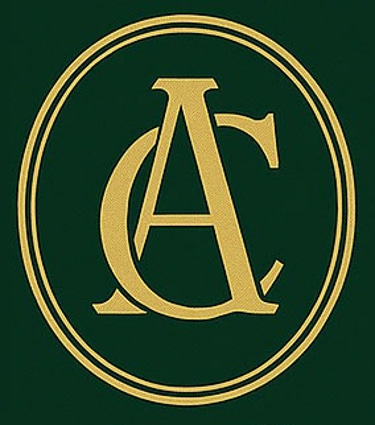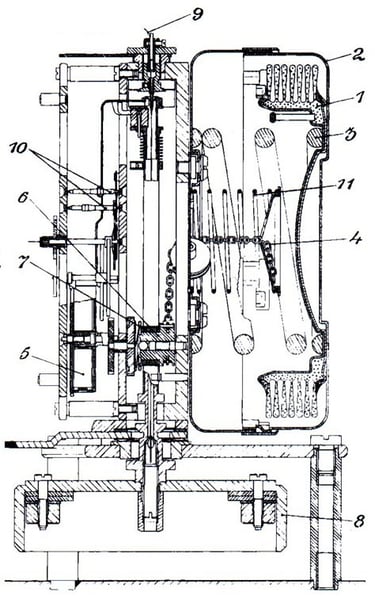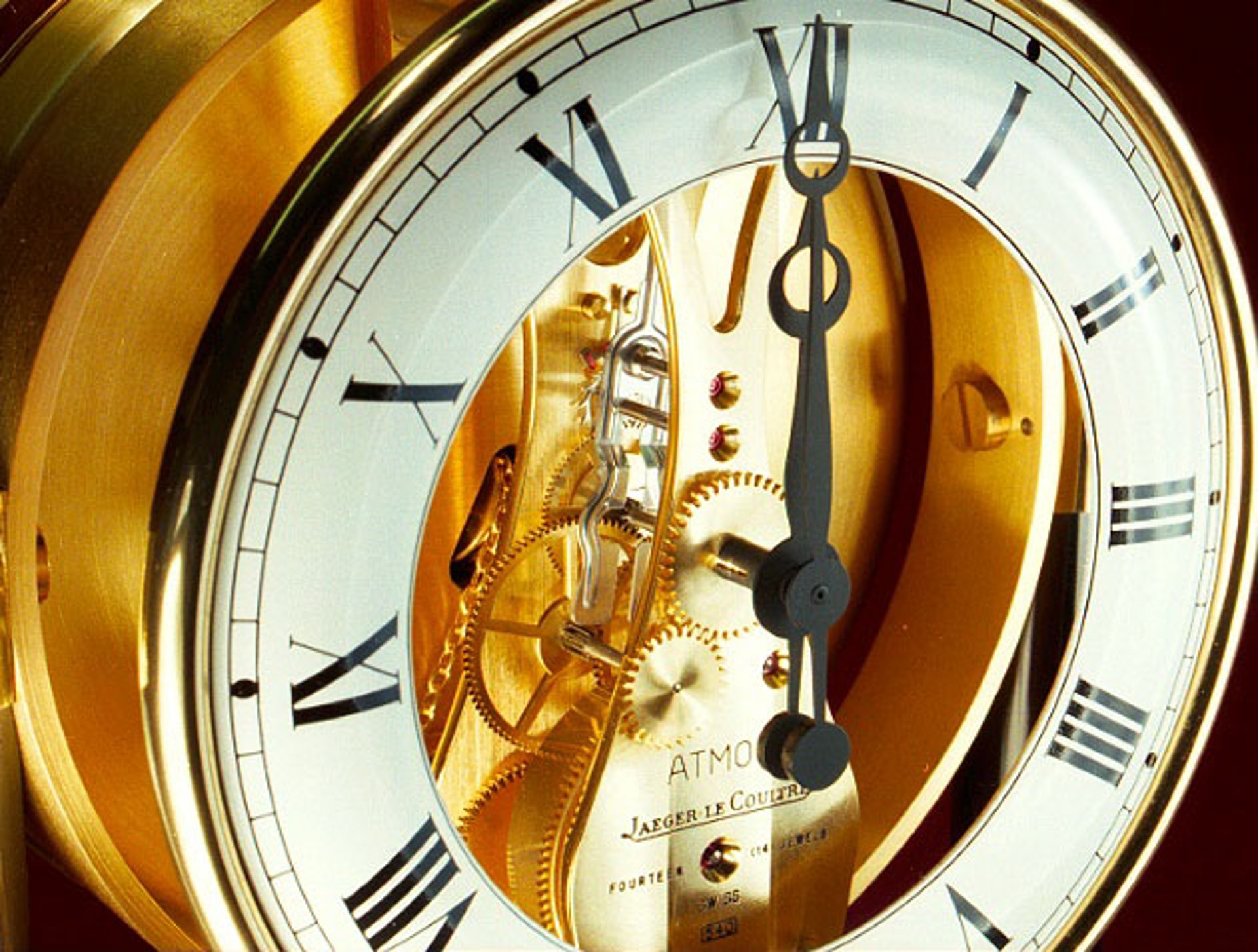
Learn
Discover detailed information about Atmos clocks, their features, and history to enhance your experience.
History of the Atmos Clock and How it Works......
The Atmos clock is a torsion pendulum movement (using an Elinvar wire suspended within a "suspension" tube) made by Jaeger-LeCoultre in Switzerland ie rather than the pendulum being a traditional swinging motion it is a much more efficient rotational motion. What makes and Atmos Clock unique, a technical marvel, is perpetual motion. It requires no winding or other means of power due to its power source (more on that later). An Atmos Clock actually needs very little power, through the use of watchmaking precision and its efficient torsion pendulum. The "balance wheel" at the end of the torsion wire rotates very slowly, mesmerisingly so. One rotation every 30 seconds or just 120 BPH (Beats Per Hour). When it was invented in 1928 it was well ahead of its time. Almost a century later, it still is.
The following information comes from various LeCoultre catalogues and documents.......
In 1928 a Neuchatel engineer called Jean-Leon Reutter built a clock driven quite literally by air. But it took the Jaeger-LeCoultre workshop a few more years to convert this idea into a technical form that could be patented. And to perfect it to such a degree that the Atmos practically achieved perpetual motion. In 1936 production of the Atmos began.
The technical principle is a beguiling one: inside a hermetically sealed capsule (Bellows) is a mixture of gas and liquid (ethyl chloride), a liquid that boils around room temperatures. As the temperature in a room rises the Ethyl Chloride boils and converts from a liquid to a gas. A gas takes up more volume than a liquid and so this conversion process expands the Bellows. As the room cools the opposite happens, the Ethyl Chloride condenses back from a gas to a liquid. The liquid requires less volume and so the Bellows contract. This constant expansion and contraction as temperature changes makes the Bellows move like a concertina. Instead of a traditional hand "winder" this natural motion constantly winds the mainspring. A variation in temperature of only one degree in the range between 15 and 30 degrees centigrade being sufficient for two days' of operation.
This video shows how an Atmos Bellows works with Atmospheric Temperature changes to wind an Atmos Clock. Watch how as the temperature drops the bellows contracts, pulling a chain, winding the clock.
For an Atmos Clock to wind itself and work perpetually without any human intervention, the Bellows has to work properly. If the Bellows is not working then the clock will fail to wind and will eventually stop.
If the Bellows are working to factory specifications they only require a 1 degree change in room temperature to power the clock for a further 2 days. The energy stored when the Atmos clock is fully wound can power the clock for around 12 months. There are times when there may not be a change in room temperature to wind the clock and so it is reliant on the stored energy. This energy is stored in the mainspring. It is worth noting that this constant self winding process continues even when an Atmos Clock is locked and / or in storage.
Over the decades the Ethyl Chloride can slowly leak to the point where there is not enough left in the Bellows to wind the clock. The Bellows will then either require re-gassing or replacement. Re-gassing a Bellows with Ethyl Chloride is a specialist task that most Clock Repairers are unable to complete. Every Atmos Clock that we sell has Bellows that have been checked, refilled by ourselves or replaced as required to ensure that the Atmos Clock works fully to the original manufacturer specifications.
To convert this small amount of energy into motion, everything inside the Atmos naturally has to work as smoothly and quietly as possible. The balance, for example, executes only two torsional oscillations per minute, which is 150 times slower that the pendulum in a conventional clock. So it's not surprising that 60 million Atmos clocks together consume no more energy that one 15-watt light bulb!
All its other parts, too, are not only of the highest precision, but also practically wear-free. An Atmos can therefore expect to enjoy a life of a >500 years, although with today's air pollution a service is recommended about every twenty to thirty years. The mechanism is so precise, so delicate that atmospheric dirt slows its operation and can eventually lead to it stopping.
Admirers of advanced technology, however, aren't the only ones who get their money's worth. Connoisseurs of elegant forms, precious materials and traditional craftsmanship, do so as well. Because every Atmos is still made entirely by hand; and with some models a single clock takes a whole month to produce. Not counting the five weeks of trial and adjustment that every Atmos has to undergo.
Only then, were the Jaeger-LeCoultre master watchmakers happy enough with the state of things to confirm it with a signature and allow another Atmos to leave the workshop. After which, many end up in the very best homes, because for decades now the world's most celebrated watch-making country has been presenting its distinguished guests with this masterpiece of Swiss artistry.
The Atmos has had the honour to be associated with great statesmen, royalty, and other renowned people including John F. Kennedy, Sir Winston Churchill, General Charles DeGaulle, and Charlie Chaplin.
More than nine decades after its invention the Atmos Clock remains a unique and emotionally resonant keeper of time – a splendid homage to design, technical virtuosity and tradition that captivates with the beauty of its form, the serene movement of its balance wheel and the mystery of its workings
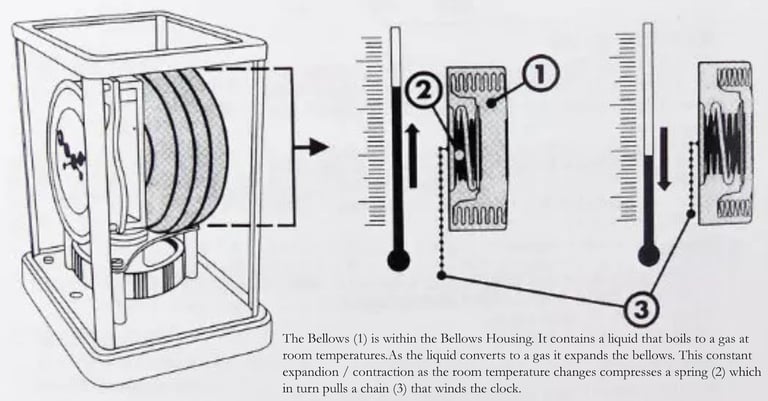

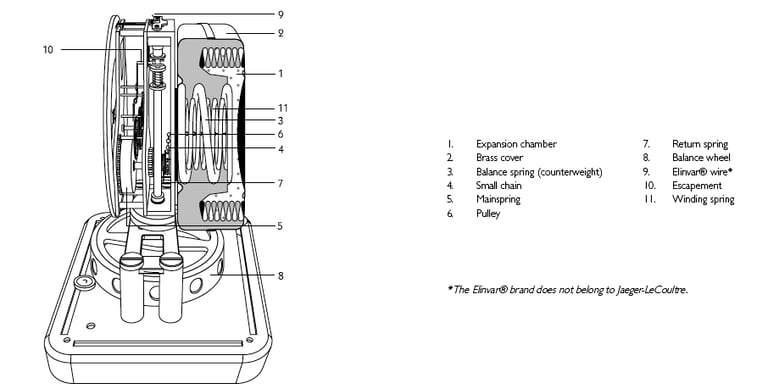


How to date an Atmos Clock......
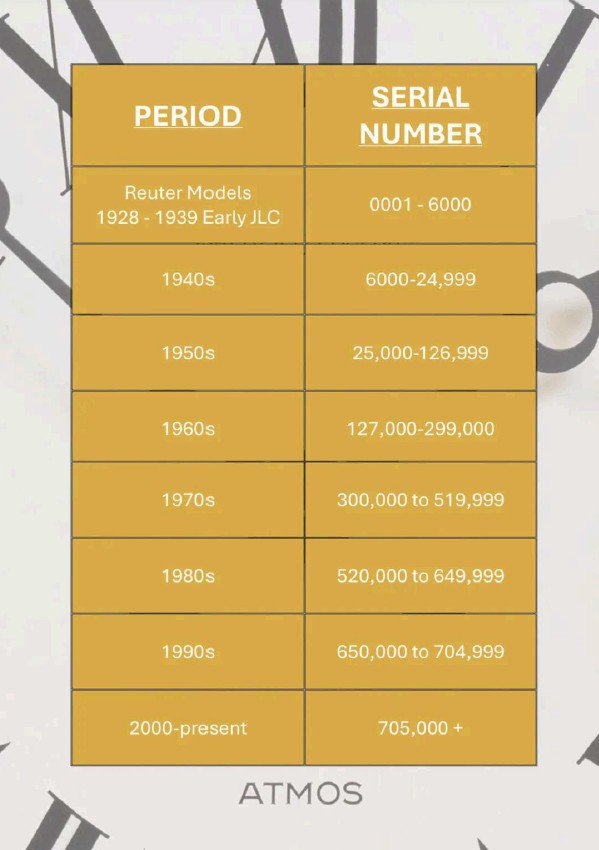

You can contact Jaeger LeCoultre directly to establish the exact production date of your clock. They will charge you a fee of around £290 to do this.
client.relations.europe@jaeger-lecoultre.com
You can however work out the approximate date of your clock by other means.
Firstly identify you clock serial number. This is usually on the top of the clock where you can see it through the glass cover. However on some variation clocks which do not have a glass top you will need to remove the case. Early Atmos II's may have 2 serial numbers (on the top and front movement) and some special edition limited run clocks (eg Prestige) will be on a case plaque.
From the serial number you will be able to roughly determine the decade or production using the table opposite.

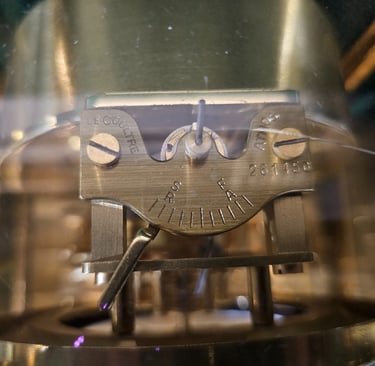
If your clock was made after 1950 with a 6 digit serial number you can also use the following calculation to determine its production year...
First 4 digits of the serial number divided by 10 eg
261450 would be 2614 / 10 = 261.4 (ie take the 1st 4 digits and move the decimal point one to the left)
abbreviated serial number x 0.051 + 1954 = year of production
eg 261.4 x 0.051 + 1954 = 1967
Please note that this is not an offical way to calculate the production date and it does not always work but often it does.
Finally, you can also remove the bellows from the rear of the clock. All bellows where inscribed by hand with the date they where made and they where usually fitted to clocks within 3-6 months. This should only be done if you are experienced with maintaining an Atmos clock so it is usually done by an authorised repairer as part of a service ie they will note the bellows production date. However, bellows can fail over time and it is not uncommon for the bellows fitted to not be the original bellows. Refurbished bellows from another Atmos maybe dated considerably before or after the clock was made.
My Atmos Clock Keeps Stopping, What Can I Check ?......
In this section, we discuss some simple things you can check without any tools or dismantling, to try and diagnose problems with your Atmos Clock........
With a traditional clock, you know within seconds if it is going to run or not. However, when you start an Atmos, you gently rotate the balance wheel half a turn. When you let go, the balance will start to rotate left and right from the energy you put into it. If the clock has zero power, the balance will continue to rotate left and right for many minutes. If the clock has a little power, it might run for several hours or even days until it finally comes to a stop. If the clock has quite a bit of power, but not enough to allow it to run continuously, it might even run for weeks before stopping. This makes diagnosis a little bit harder.
The following are a series of simple checks, in order of priority, to see if we can get a clue to the problem and what is needed.
1. Check that the balance lock is fully released.
2. Check that the balance wheel is not touching the bottom of the case in any way.
3. Check the clock is level. Don't use the spirit level bubble, it might not be accurate, check the balance stem is centered in the hole in the bottom frame. If it is not centered, correct it with the leveling screws, ignoring the spirit level bubble, and retry the clock.
4. Check that the hands are not catching on each other or rubbing on the dial.
5. Look at the winding chain on the "nine" side of the clock works. If you see little or no chain and mostly spring, the bellows probably need charging, repair, or replacing. If you see the chain more than halfway around the winding pully, the bellows are probably OK.
6. Look to see if the winding chain is broken, "dangling" down. If so the clock will need repair and servicing.
7. Check to see that the chain is not twisted and that it is running on the two pully wheels.
8. Look if the Pallet Fork is "overbanked" meaning the fork is on the wrong side of the impulse roller. The balance wheel is trying to swing in one direction, but the fork will not let it. To correct this, gently tease the balance wheel in the direction away from the fork with a toothpick. Just a fraction will do the trick.
9. Look at the suspension wire regulator clamp. The flat edge on the ‘beak’ must be parallel to the front and back of the clock when the balance wheel is at rest in the center of rotation.
10. Look to see if there is a 1.65 mm bridge gap [or 0.8 mm on the 540].
11. Look to see if the gap above the lower bridge is the same size as the gap below the bridge is.
12. Check the mainspring winding by compressing the return spring. When this spring no longer extends, the winding of the mainspring is complete.
For more detailed information about these issues and how to resolve them (and much more!) it is worth investing in the excellent Atmos Reference book "The Atmos Clock Repairer's Bench Manual - Substantially Revised 2024 Edition" which is available for Purchase and Download from our Shop.
Hopefully one or more of these checks will resolve your problem. If not, you will need to arrange for your Atmos Clock to be serviced.
How to pack an Atmos Clock for Postage......
Atmos Clock are very delicate and require careful packaging to ensure that they do not get damaged in the post.
However, there are only a few things that you need to do to be able to post them with confidence :
DO LOCK THE CLOCK! Follow the normal locking procedure but with one exception:
Don't wait for the balance wheel to rotate all the way to the Right to Lock the clock. Instead watch the Balance Roller enter the Pallet Fork and Lock the clock with it inside the fork.
DO NOT put any packaging inside the clock case. The Minute Finger in particular is very fragile. The post it connects to is very easy to snap and very expensive to replace. You are far better not putting any packaging inside the case that risks breaking the minute hand off. I've had many clocks posted to me with the sender thinking they where doing the right thing by putting packing inside the clock case only for this to snap off the minute hand.
DO secure the glass in place, ideally with low adhesive "Decorators" Tape so that it does not leave any residue or use Elastic Bands.
DO also secure the Locking Lever in the Locked position with some of the tape, to make sure it does not unlock. If your clock has an extra locking pin on the bottom eg 526 models, then screw this locked as well.
DO "Double Box" the clock. You can use an original box for the Inner if you have it but if not any strong box of the correct sizes will do. The ideal sizes are:
Inner Box - 12 x 10 x 8 inches or 305 x 255 x 200 mm
Outer Box - 14 x 14 x 14 inches or 355 x 355 x 355 mm
It is worth noting that the package with Atmos Clock will weigh c7kg.
Arrange your courier for the size of the Outside Box and up to 10kg in weight to be safe.
DO Have plenty of extra padding ready to wedge inside the boxes.
DO Have some good quality tape to secure the boxes shut.
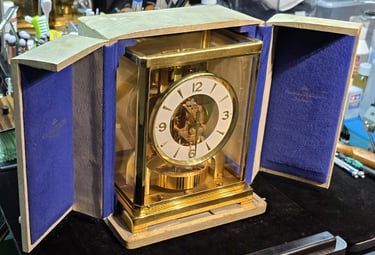

If you have an original box use that as the inner box.
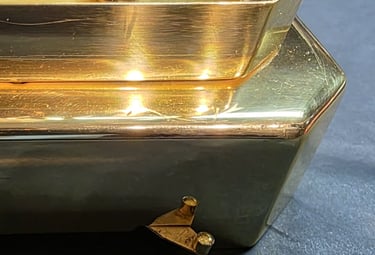

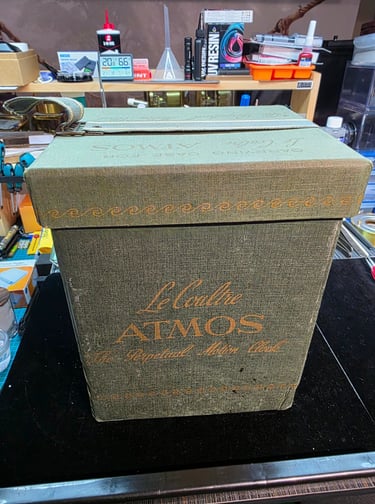

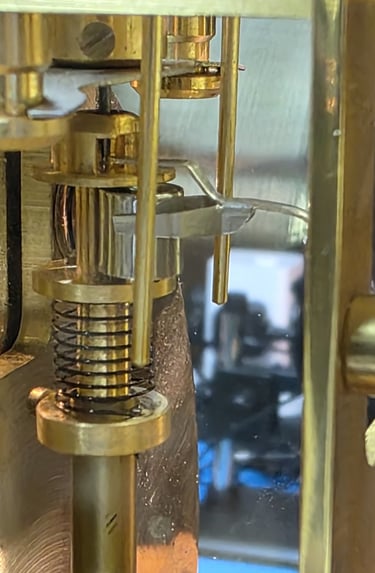

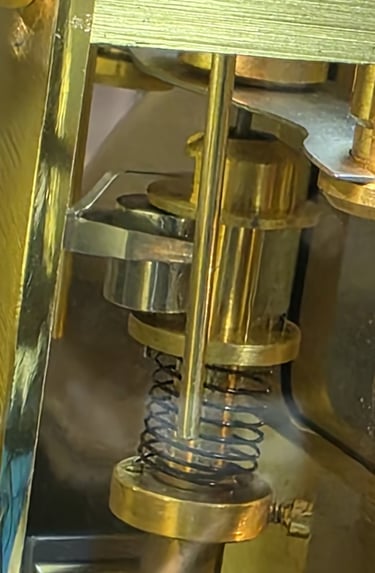

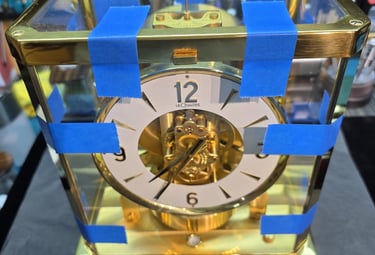

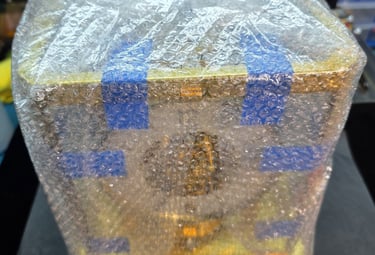

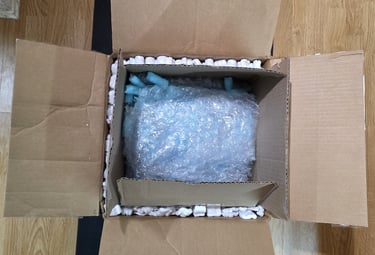

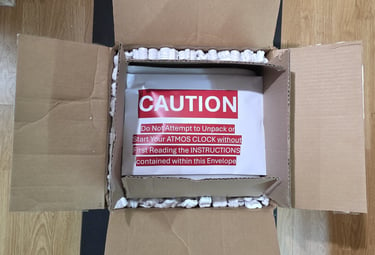

Lock the Clock!
Do it with the Pallet Fork holding the Balance Roller
Secure the Glass with "Decorators" tape or Elastic Bands.
Add some packaging directly to the OUTSIDE of the clock.
DO NOT be tempted to put any packaging inside the clock case.
"Double Box" the clock.
Add additional padding to protect the clock
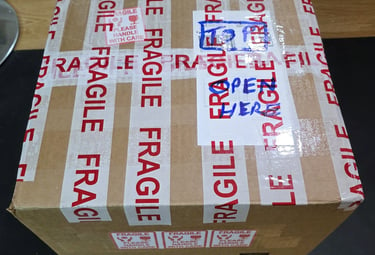

Use Good Quality Tape to Secure the Box Closed.

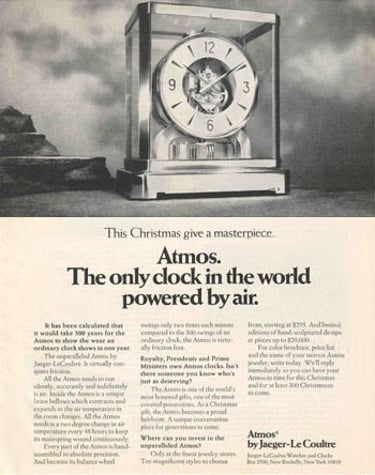
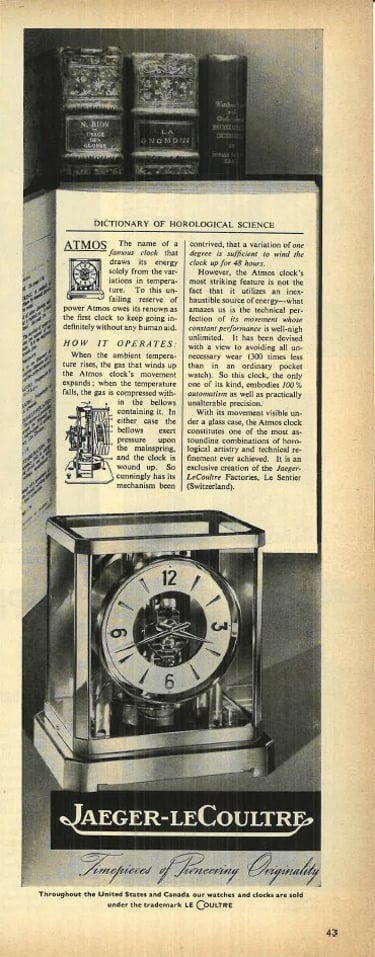
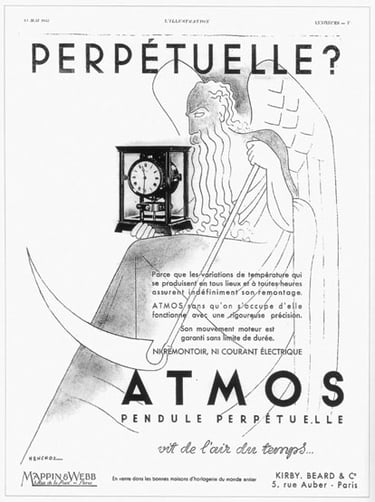
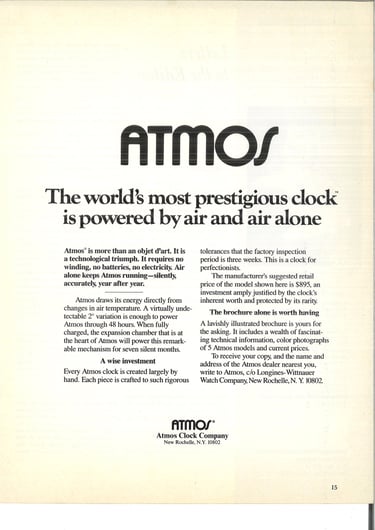
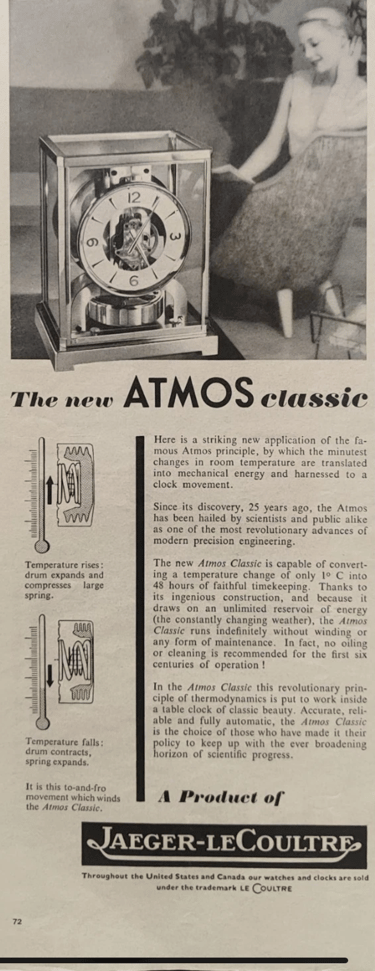
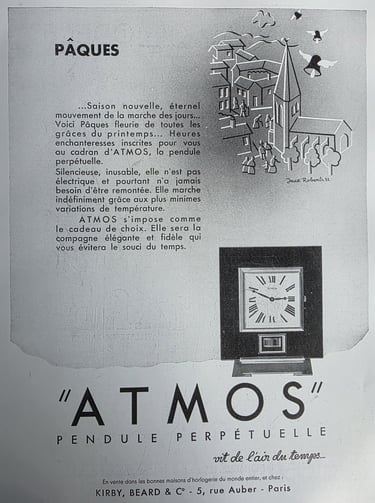
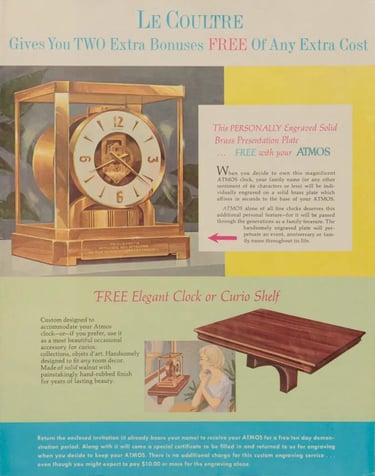
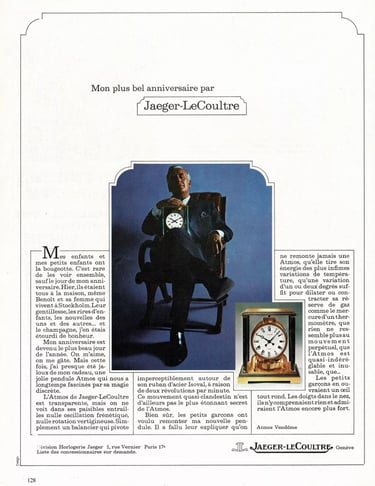
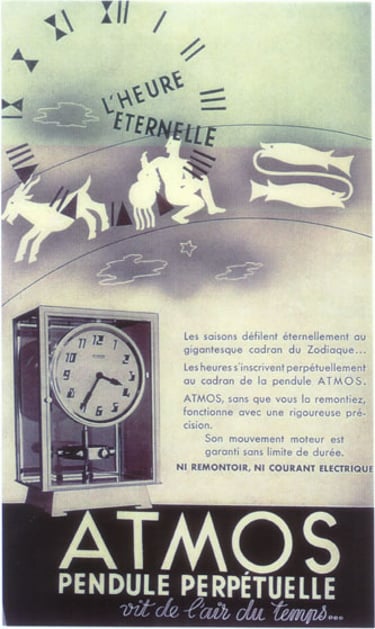
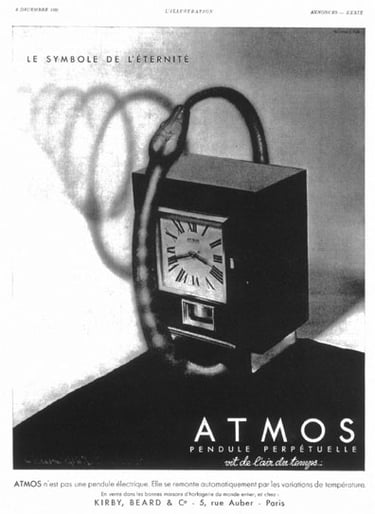
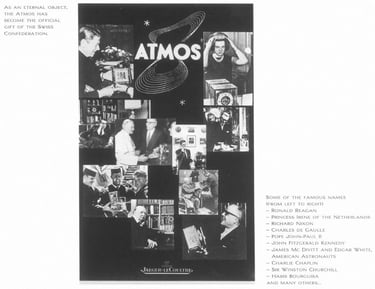
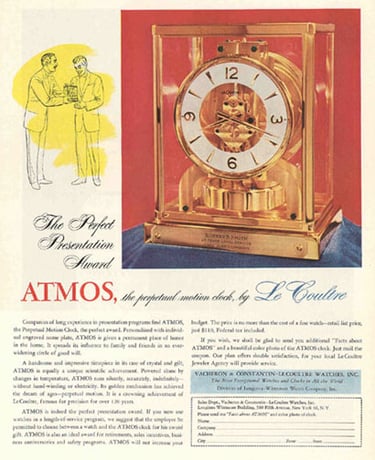
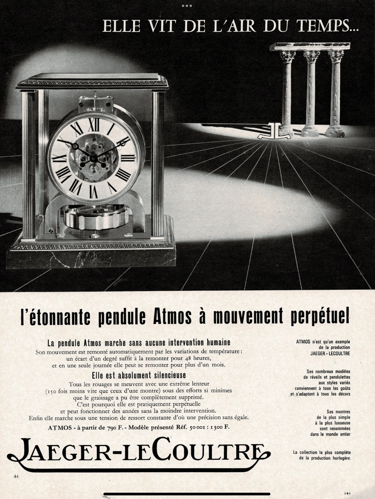
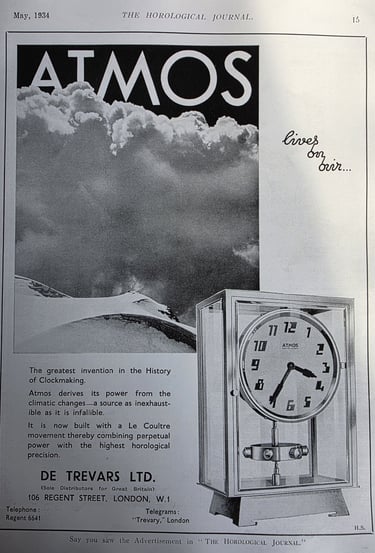
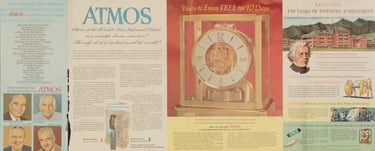
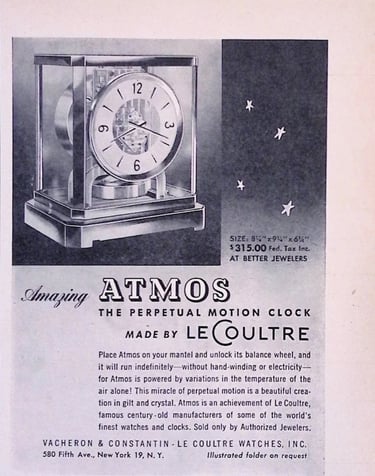
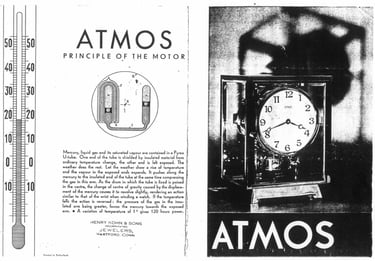
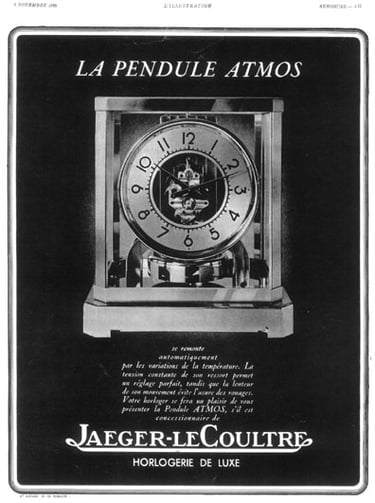
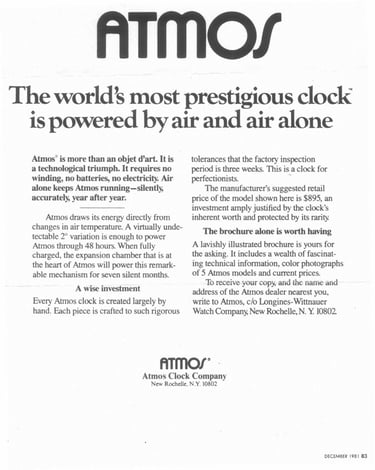
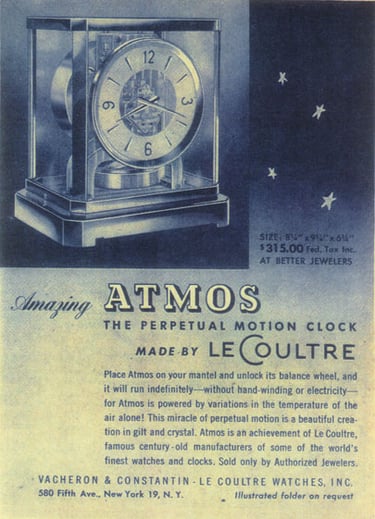
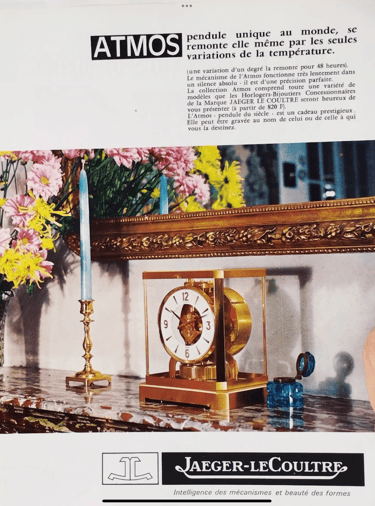
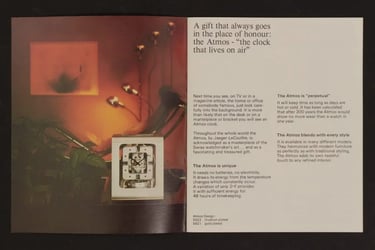
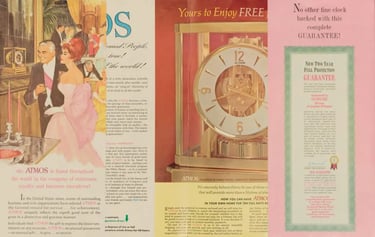
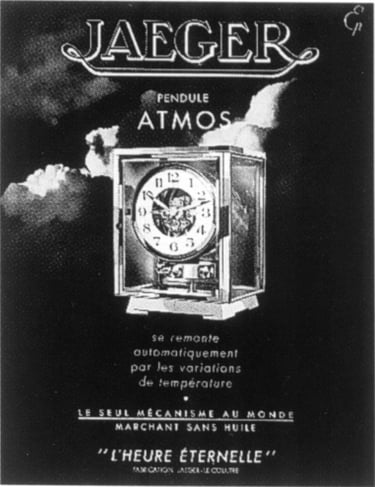
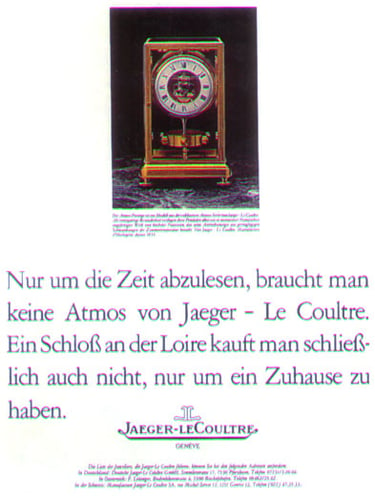
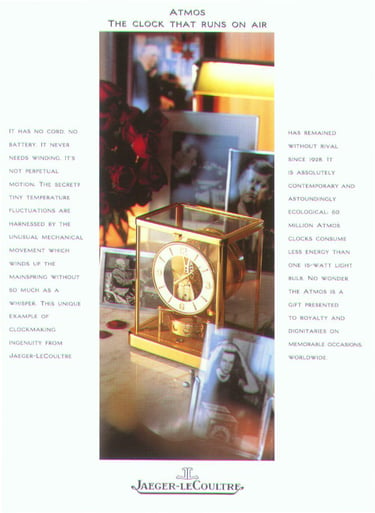
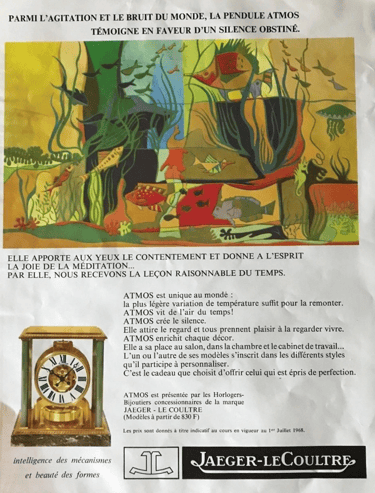
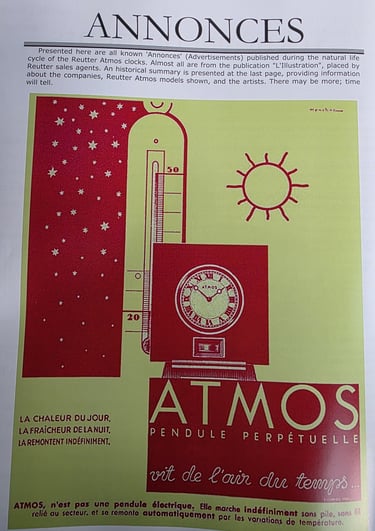
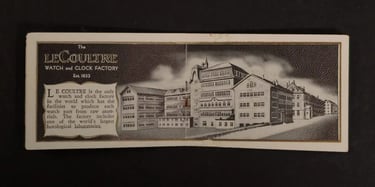
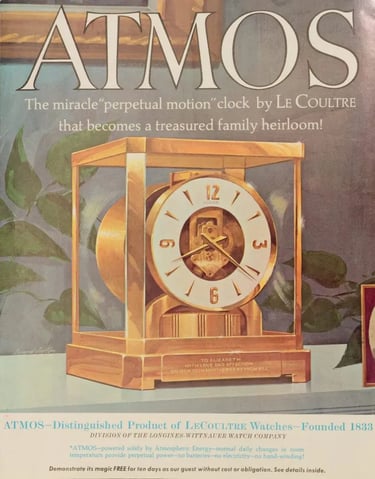






























A Collection of Historical Atmos Clock Advertisements.......

A Collection of Jaeger LeCoultre Videos......


